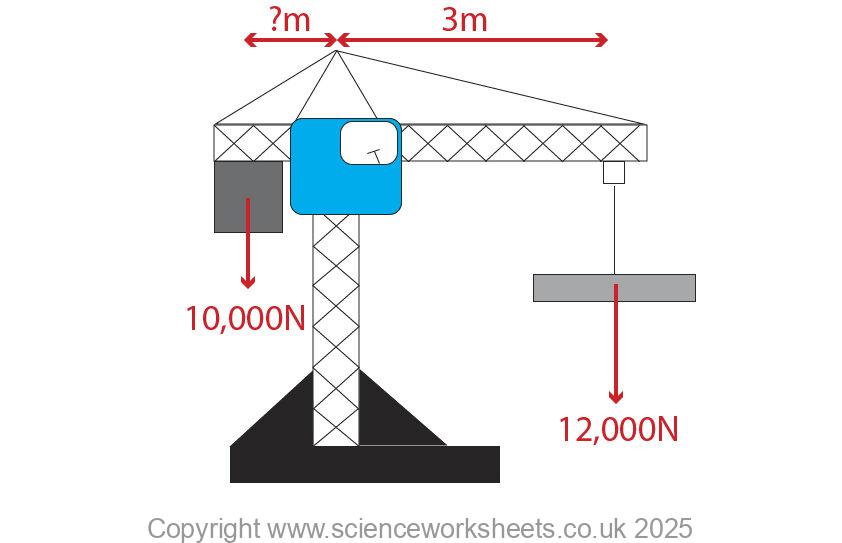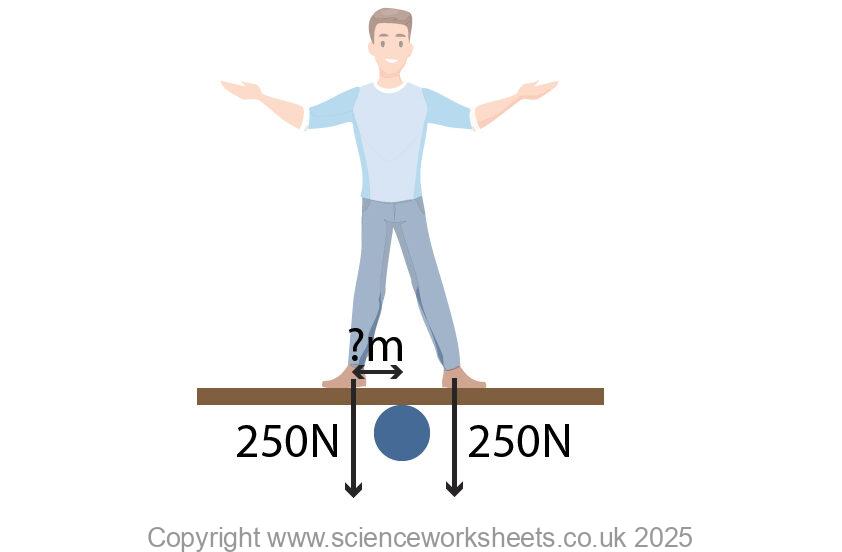Answers to AQA GCSE Balancing Moments(Physics)
Practice questions
1.State the principle of moments
When an object is balanced, the total clockwise moment about a point is equal to the total anticlockwise moment
2. Use the image below to answer the following questions.

Calculate the length of the distance between the counterweight on the left hand side and the pivot. This unknown distance has been marked on the diagram as ?m.
F1 = 10000N, d1 = ?m, F2 = 12000N and d2 = 3m
F1 x d1 = F2 x d2
d1 = (F2 x d2)/F1
d1 = (12000Nx3m)/10000N
d1 = 3.6m
3. Use the image below to help you to answer the following question

The man has a clockwise moment of 190Nm. Both of his feet are equal distance from the pivot. Calculate the distance between the pivot and his left foot. This distance has been labelled as ?m in the diagram above.
F1 x d1 = F2 x d2
Clockwise moment = Force x distance
Distance = Clockwise moment/Force
Distance= 190Nm/250m = 0.76m
As the feet are equal distance from the pivot the other foot is 0.76m from the pivot as well, so the distance is 0.76m
Absorption and Emission of EM Radiation
JJ Thomson and Plum pudding model
Ernest Rutherford and the Nuclear Model
Niels Bohr changing the Nuclear Model
Discovering the Proton and Neutron
Measuring radiation from radioactivity
Radiation types and properties
Random nature of radioactive decay
Radioactive contamination or irradiation
Hazards of contamination and irradiation
Studies on the effects of radiation on humans
Different half lives of radioactive isotopes
Nuclear Fission Chain Reaction
Writing nuclear fission equations
Drawing ray diagrams for a concave lens
Drawing Ray Diagram to produce a virtual image for a convex lens
Drawing ray diagram to produce a real image for a convex lens.
Specular and Diffuse Reflection
Seeing Coloured Objects Part 2
Viewing objects through coloured filters
Transparent, Translucent and Opaque